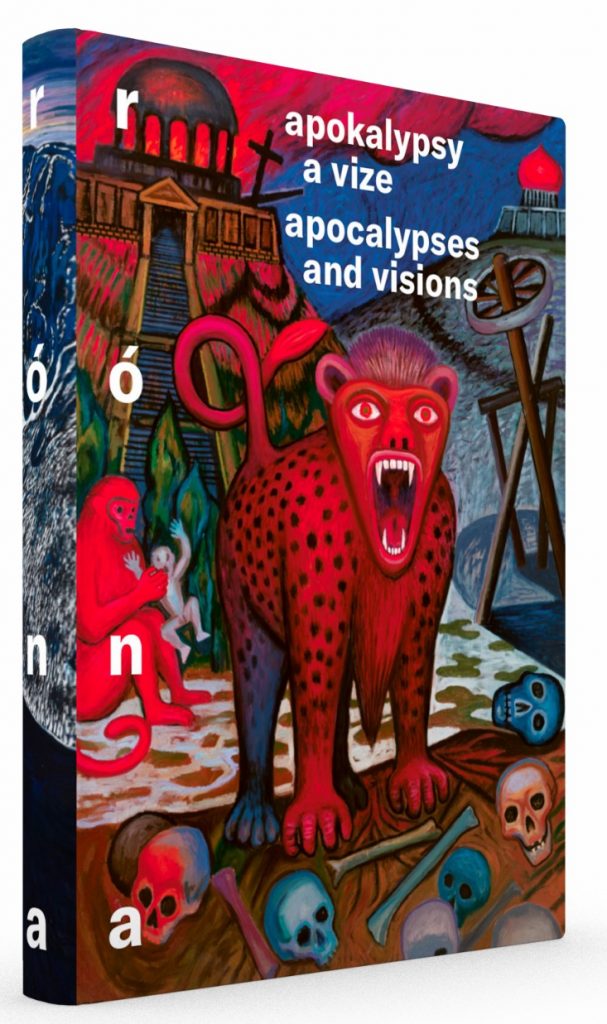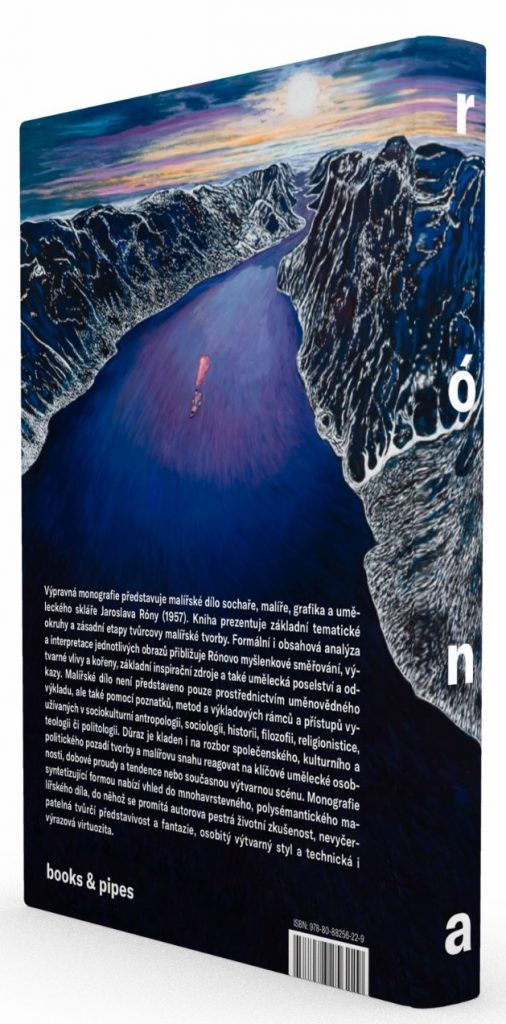The publication Jaroslav Róna: Apocalypses and Visions was written by an academic from the Institute of Ethnology at CU FA and presents the work of a sculptor, painter, graphic artist, and glass artist. He belongs among the prominent personalities of the contemporary Czech art scene. The book discusses fundamental thematic areas and essential stages of the artist’s painting.
Even during his studies, Jaroslav Róna participated in exhibitions called Confrontations. He became known to the broad cultural public as a co-founder of the most notable artistic collective of the generation of the 1980s, the Tvrdohlaví (“Hardheaded“) group. Still as its member, Róna already came to stand apart as a distinctively individual figure incompatible with any of the dominant trends of that time.
The formal as well as content analysis and interpretation of his individual paintings reveal Róna’s thinking, artistic influences and roots, basic sources of inspiration, and explicit and implicit artistic messages and references. His paintings are presented not only through interpretation from the perspective of art history, but they also incorporate insights, methods, and interpretive frameworks, and approaches used in sociocultural anthropology, sociology, history, philosophy, religious studies, theology, and political science. In order to reflect on and deepen our understanding of Róna’s paintings, it is essential to harness broader interdisciplinary interpretive frameworks and contextual analyses. This enables us to enter the painter’s imaginary world, uncover his artistic dreams, understand the aims of his work, and decode the wide range and repertoire of motifs in his oeuvre.
The publication also emphasises the analysis of the social, cultural, and political background of Róna’s work and his efforts to respond to key artists, period trends and tendencies, and the contemporary art scene. Aspirations of Róna’s compositional construction of individual paintings, their colouring and artistic content extend beyond the traditional narrative character and representation of an artwork. From this point of view, his paintings can be seen as a critical probe leading to an existential reflection on the meaning, causes and goals of human life and transformations of society including its present, past and future.
The monograph offers a synthesizing insight into the multi-layered, polysemantic paintings, which reflect the artist’s varied life experience, inexhaustible creative imagination and fantasy, distinctive artistic style, and technical and expressive virtuosity.
You can purchase the book here.









